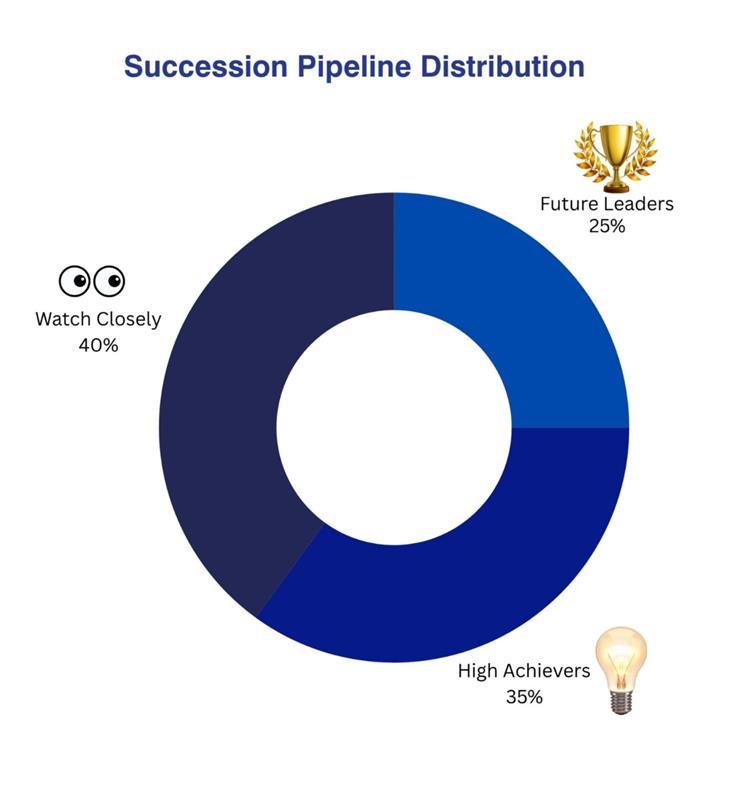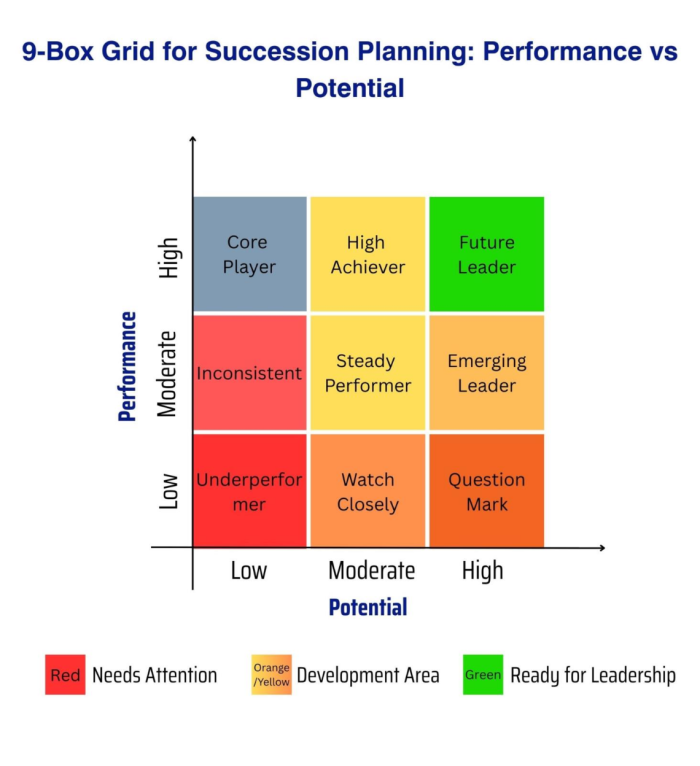The Succession Playbook: Building Future Leaders Like a Championship Team

Picture this: Your top-performing call center leader – the one who consistently exceeds targets, mentors the team, and practically breathes your company culture – just handed in their resignation. Two weeks’ notice. No internal replacement ready. The ripple of panic is already spreading through your organization.
Friend, I’ve been there. More times than I care to admit. And I’m here to tell you that while this moment feels overwhelming, it’s also your greatest opportunity to transform how your organization thinks about leadership development.
I remember sitting in my office several years ago, staring at a resignation letter from one of our top leaders. My heart sank. Not because I couldn’t replace them – but because I realized I had failed them, our team, and our organization by not preparing for this moment. That day changed everything about how I approach leadership development, and I want to share what I’ve learned with you.

Consider the Green Bay Packers’ legendary quarterback succession. When Brett Favre’s retirement created uncertainty, the organization didn’t panic. They had Aaron Rodgers developing on the bench for three years, learning the system, building relationships, and preparing for his moment. When Rodgers eventually took over, the transition was seamless – the team maintained its championship culture and competitive edge.
Fast-forward: as Rodgers moved on, the Packers once again demonstrated their commitment to succession planning with Jordan Love, who had been developing in their system for four years. This wasn’t luck – this was strategic succession planning at its finest.
Here’s what I’ve discovered in my journey over the years of helping to build countless leadership benches: companies that consistently outperform their competitors share one critical trait: they never leave their talent pipeline to chance. They identify, develop, and prepare their next generation of leaders long before they’re needed.
As we enter an era where AI is transforming every aspect of business operations, one truth remains constant: people are still the ultimate differentiator. While AI can automate processes, analyze data, and even handle routine customer interactions, it’s human leaders who create culture, inspire teams, and navigate complex challenges. The organizations that thrive will be those that invest in developing their people alongside their technology.
Here are 9 proven strategies that have worked for me and countless other leaders – strategies that will transform your uncertainty into opportunity.
- Understand What Succession Planning Really Means (It’s Not What You Think)
A critical point – succession planning isn’t what most people think it is. It’s not merely finding a like-for-like replacement when someone leaves. That’s crisis management, not leadership development.
Real succession planning is a strategic, ongoing process of identifying, assessing, and developing talent to ensure leadership continuity. It’s about believing in people before they believe in themselves and giving them the tools to succeed.
In today’s AI-enhanced workplace, this becomes even more important. As AI handles routine tasks, your leaders need different skills: emotional intelligence, strategic thinking, change management, and the ability to work alongside intelligent systems. Preparing them for this future is essential for organizational success.
- Face the Reality of What’s at Stake (Because It Matters More Than You Think)
We need to understand something: the cost of not having a succession plan isn’t just about money – it’s about people’s lives, dreams, and futures. Let me share the hard truth:
- Organizations without succession plans experience an average of 5-7 months of decreased productivity when key leaders depart
- Companies with succession plans report 20% higher employee engagement scores
- Internal promotions cost 18% of an annual salary compared to 213% for external hires
- 40% of organizations that lose institutional knowledge during transitions report significant customer satisfaction declines
But here’s what the statistics don’t tell you: behind every failed transition is a team that loses confidence, employees who question their future, and customers who lose trust. This is precisely why strategic planning matters.
- Start Where You Are (You Don’t Need to Be Perfect to Begin)
I know it feels overwhelming. Where do you even start? Take a deep breath. You don’t have to have all the answers today. Start by asking yourself these questions:
- Which positions, if vacated immediately, would threaten our company’s goals?
- Which roles directly impact customer satisfaction, AI integration, or operational stability? • Where do we see potential retirement or attrition in the next 12-36 months?
- Who has the potential to bridge human leadership with AI-enhanced operations?
Here’s what I’ve learned: you already have more talent in your organization than you realize. You just need to look for it with intentionality. Start identifying multiple potential successors for each critical role – and don’t just look at the obvious candidates. Some of your greatest future leaders are hidden in plain sight.
- Simple Tool; Big Impact: The 9-Box Grid
Let me share one of the most powerful tools our team discovered – the 9-box grid for succession planning. This simple assessment will support meaningful discussion and action.

Here’s how it works:
- Evaluate team members on both current performance and future potential
- Place each person in one of nine boxes, from low performer/low potential to high performer/high potential
- Tailor development strategies based on their placement
The magic happens during calibration meetings where you and your leadership team discuss these evaluations. These conversations will reveal insights about your people that will surprise you. You’ll discover potential you never knew existed and identify development needs you never recognized.
This isn’t about labeling people – it’s about seeing them clearly so you can help them grow.
- Invest in People the Way You Wish Someone Had Invested in You
Think back to a leader who believed in you before you believed in yourself. What did they do? How did they make you feel? Now you have the chance to be that person for someone else.
Stop offering generic training that doesn’t create real leaders. Instead, create development experiences that transform people:
- Pair high potentials with executive mentors who genuinely care about their growth
- Create stretch assignments that build critical skills while showing trust
- Give them exposure to strategic initiatives and let them contribute meaningfully
- Provide specialized training in areas like change management, AI ethics, and human-technology integration
Remember: people don’t care how much you know until they know how much you care. Make your development programs personal, meaningful, and transformational.
- Give Them Safe Places to Fail and Grow
One of the biggest mistakes I made early in my career was waiting until people were “ready” before giving them challenges. Here’s what I learned: people become ready by practicing, not by waiting.
Create real-world testing grounds where your future leaders can develop their skills:
- Let them lead AI implementation projects or digital transformation initiatives
- Have them manage teams during technology transitions
- Ask them to develop training programs for new processes
- Give them complex customer situations that require both empathy and problem-solving
- Put them in charge of cross-functional projects
Yes, they’ll make mistakes. That’s the point. Your job is to be there to guide them, support them, and help them learn from those experiences.
- Measure What Matters (But Remember the Person Behind the Numbers)
I believe in data-driven decisions, but I also believe in people-centered leadership. Use structured assessments to evaluate readiness:
- Competency evaluations against role requirements
- 360-degree feedback from peers, direct reports, and leaders
- Performance metrics in trial opportunities
- AI literacy assessments and digital transformation comfort
- Self-assessments of confidence and preparedness
But remember – behind every data point is a person with dreams, fears, and potential. Use the data to help them grow, not to limit their possibilities.
- Build Pathways That Give People Hope for Their Future
One of the greatest gifts you can give someone is clarity about their future possibilities. Create and communicate clear development pathways:
- Entry-level to team lead (including basic AI literacy)
- Team leads to supervisor (change management skills)
- Supervisor to manager (strategic thinking and AI collaboration)
- Manager to director (digital transformation leadership)
- Director to executive (organizational vision for an AI-enhanced future)
When people can see their path forward, they invest differently in their growth. They have hope. And hope changes everything.
- Master Transitions Because People Are Watching
Here’s something I learned the hard way: how you handle leadership transitions tells your entire organization what you really value. Do it right, and you build trust. Do it wrong, and you create fear.
Set your new leaders up for success:
- Create thorough knowledge transfer processes
- Establish clear 30-60-90-day success plans
- Provide transition coaching and emotional support
- Communicate changes with transparency and optimism
- Celebrate both departing and incoming leaders
Remember, transitions are emotional for everyone. Acknowledge this reality while maintaining forward momentum.
Framework That Works
At Etech, we’ve developed a succession planning framework through years of trial, error, and refinement. Here’s what we’ve learned works:

- Strategic Role Identification: identify critical positions before we need to fill them
- Competency Mapping: define exactly what success looks like in each role
- 9-Box Grid Evaluation: assess every team member fairly and consistently
- Targeted Development: create personalized growth plans for each person
- Trial Opportunities: give people safe spaces to practice and grow
- Readiness Assessment: use data to determine the right timing for advancement
- Smooth Transitions: support everyone through leadership changes
The results? 90% of our leadership roles are filled internally, our average leadership tenure is 7.2 years, and our teams consistently deliver industry-leading results. But more importantly, we’ve changed lives and created opportunities for hundreds of people.
The Challenges You’ll Face (And How to Overcome Them Together)
This journey isn’t always easy. You’ll face challenges, and that’s normal. Here are the most common ones and how to address them:
When Leaders Resist Development: Some leaders will fear that developing successors threatens their position. Help them understand that developing others is actually the highest form of leadership. Make it part of their performance evaluations and celebrate those who invest in people.
When Technology Skills Lag Behind: Traditional approaches may not address AI literacy needs. Integrate technology training into all development programs. Remember, the goal isn’t just technical competence – it’s preparing leaders who can bridge human and AI capabilities.
When Diversity Gaps Persist: Intentionally identify and develop high-potential employees from underrepresented groups. Tap into different age demographics. Create targeted development plans that address both leadership skills and technology competencies. This isn’t just the right thing to do – it’s essential for your organization’s future.
When Expectations Get Out of Alignment: Be clear that being in a succession plan doesn’t guarantee immediate promotion. Help people understand that development itself is valuable, regardless of timing. Focus on the personal and professional benefits of enhanced skills.
When Technology Changes Rapidly: Don’t try to train for specific tools that may become obsolete. Instead, focus on developing adaptability, learning agility, and foundational technology literacy that can evolve with changing systems.
Here’s What is Important to Remember
As AI continues to transform business operations, one truth becomes increasingly clear: while technology can enhance capabilities, it’s people who create championship cultures, inspire excellence, and navigate the complex challenges of leading in an AI-enhanced world.
The Green Bay Packers understand this principle. Their success isn’t built on having the best facilities or the most advanced technology – it’s built on developing people who can perform under pressure, adapt to changing circumstances, and maintain excellence over time.
Organizations can’t afford to wait until key positions are vacant to think about succession planning. More importantly, they can’t afford to waste the incredible potential that exists within their teams every day.
The future belongs to organizations that embrace AI as a tool while recognizing that people remain the heart of every great company.
Building your championship team starts today. Start small, start where you are, but start. You can do this.
Are you using any of these specific tactics or others that have worked for you? We’d love to hear from you.
Want to know how Etech can help transform your approach to succession planning and leadership development? Get in touch with us today. Together, we’ll build your leadership bench strength for the AI-enhanced future.


